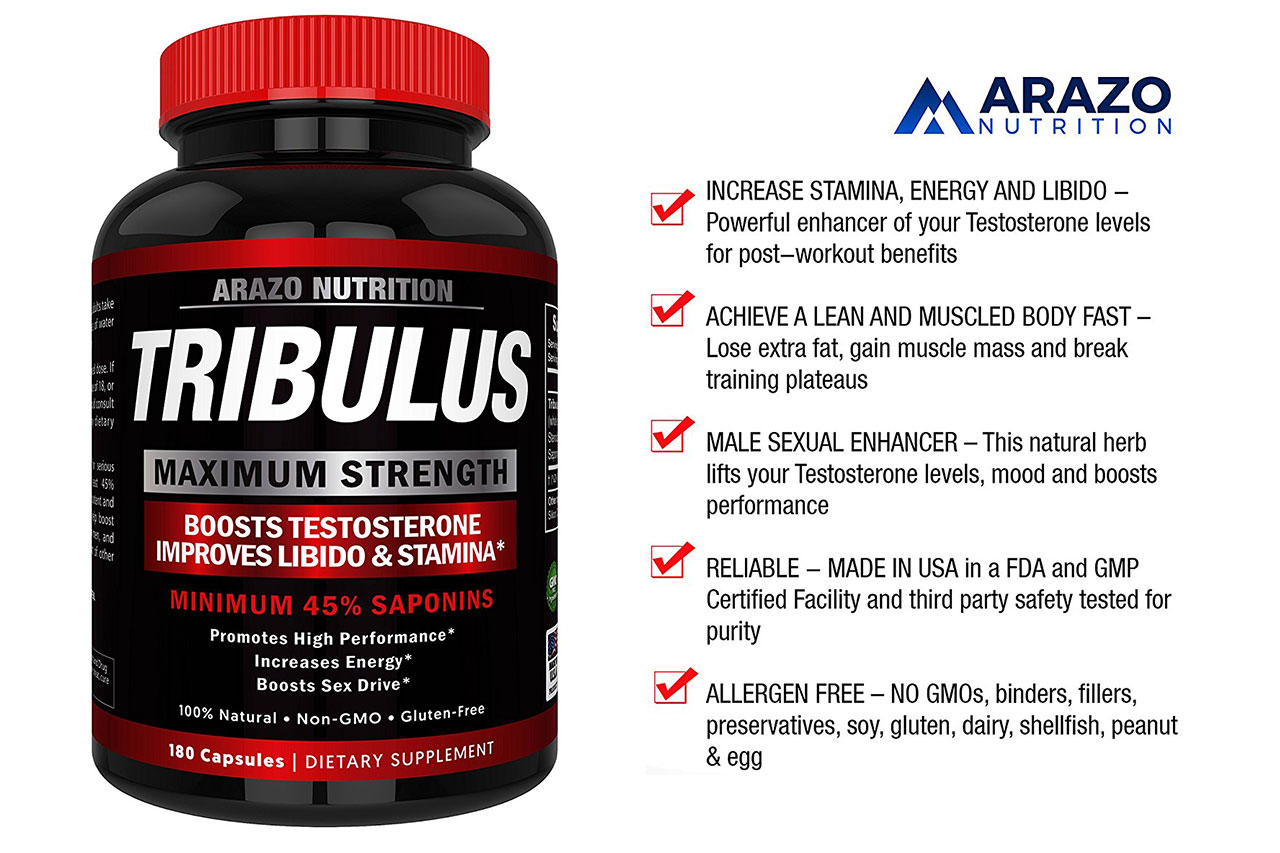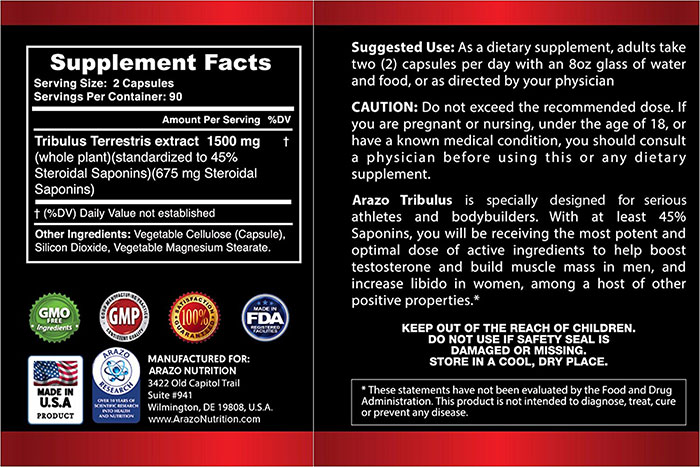Tribulus is known for its many useful properties ascribed to it by folk medicine. In recent decades it has been one of the few herbs that are in the elite of nutritional supplements and is among the most popular products in sports supplementation.
What Is Tribulus Terrestris?
Tribulus terrestris is an annual plant known in traditional Bulgarian medicine by the name “Grandma’s teeth” and in other parts of the world it is called cat’s head, bull’s head, devil’s thorns, devil’s eyebrow.
The names of the herb come from its curious appearance, including hairy stems and leaves, and small spikes on the fruit. The herb is found in southern Europe, parts of West Asia and China.
The tribulus fruits are popular in Chinese medicine, used to treat eye problems, swelling, high blood pressure and heart disease. The beneficial properties of tribulus are also popular in Indian Ayurvedic medicine, where they are associated with the treatment of impotence, weak appetite, heart disease, jaundice and sore throat.
The root and fruit of tribulus terrestris have the highest content of active ingredients, containing several steroidal saponins, proteins, phenols, flavonoids, glycosides and large amounts of vitamin C.
Types Of Tribulus
Tribulus is a widespread herb in Europe and Asia, with significant differences in the ratio of active plant substances in individual geographic areas.
The protodioscin, which is the most active saponin in the tribulus and is said to have muscle-building properties, is contained in the largest quantities in the Bulgarian, Turkish and Macedonian tribulus.
These three species contain almost double amounts of protodioscin compared to other species.
In addition, there are no important steroidal saponins in the Indian and Vietnamese Tribulus such as tribestin and prototribstein, but triblockin concentrations are many times more.
Scientists find that the geographical location affects the balance of saponins, with the tribulus growing in Southeast Europe and West Asia being extremely rich in protodioscin, and that in South Asia and the Far East is richer in tribulosin and gitogenic saponins.
There are other types of tribulus that differ in their content of active ingredients. Tribulus pentandruse is rich in bioflavonoids, such as quercetin, camptotherol and trichin, exhibiting stronger antioxidant properties.
Tricine is absent in tribulus terrestris. Another popular type used in some sports formulas is tribulus alatus, which contains steroid glycosides similar to those in trubulus terrestris. There is a study that demonstrates the ability of tribulus alatus to increase testosterone in rats.
How Does Tribulus Work?
Like most herbs, tribulus has a whole set of bioactive herbal substances that can affect certain processes in the body.
Tribulus is rich in saponins, which are derived metabolic substances in plants. The saponins in the tribulus are based on the steroid skeleton and therefore are called steroid saponins.
The main steroid saponin in tribulus terrestris is protodioscin, which may in certain cases account for up to 45% of the dry extract mass. Other saponins in the tribulus are pseudoprotonioscin, dioscin, triblozin, prototribestin and tribestin, spirostanol and furostanol.
Despite many controversial data, scientists argue that the main mechanism of action of tribulus is linked to its effect on hormones.
In men, it increases the luteinizing hormone in the testicles, that form testosterone. In women, tribulus does not increase testosterone but regulates female sex hormones.
Out of the other active substances in the herb, phenols account for about 18% of the water extract, and vitamin C concentrations reach 900 mg per 100g. This suggests certain antioxidant properties of the herb.
Benefits For People
- The use of tribulus in some individuals demonstrates an increase in appetite, but scientific evidence of this effect does not exist to date;
- Traditional use of tribulus is associated with increased sexual desire in humans, although specialized studies do not exist;
- The only study on the effect of tribulus on human blood pressure found that taking 3 grams daily reduced blood pressure within one week, and by the fourth week it was still reduced by nearly 10%. Adjustment of heart rhythm and cholesterol was also noted;
- Potential Benefits in the Treatment of Prostate Hyperplasia, Reducing Symptoms and Prostate Volume. Tribulus is used in combination with curry leaves.
- Despite claims about the benefits of increasing strength and muscle mass, two studies on professional athletes fail to show similar effect;
- Despite initial studies demonstrating the ability of the tribulus to increase luteinizing hormone and testosterone, recent scientific tests do not show similar effects in healthy men, women, and professional athletes. Potential benefits may be the intake of tribulus alatus or fruit extract, and not the extensively used additives in the above-ground parts.
Proven Potential Benefits In Animals And Human Cells
- In vitro tests demonstrate the potential benefits of tribulus in the regulation of platelets in the blood;
- In vitro, the potential anti-inflammatory properties of tribulus have been identified due to the suppression of anti-inflammatory cytokines, prostaglandin and nitric oxide forms;
- In vitro studies demonstrate the ability of tributyl saponins to regulate pancreatic enzyme a-amylase inhibitors which are responsible for the degradation of starch. By its effect, saponins manage to regulate hyperglycemia after carbohydrate intake. The effect of tribulus is considerably weaker than other popular herbs such as turmeric extracts;
- In traditional medicine, the tribulus is used as a painkiller. The only study demonstrating the pain-relieving effect of the herb was conducted in Iran on albino mice. Tribulus has been found to soothe the pain in gastric ulcer;
- There are several scientific studies on animals that clearly demonstrate the qualities of tribulus as an aphrodisiac. The combination of tribulus terrestris, leuze, and Longjack increases not only the libido in boars but also the amount of seminal fluid. All indicators of elevated libido are also present in rat tests, including castrated primates and rabbits. An Indian study concludes that tribuus has an effect equivalent to the Viagra in animal libido increase;
- Tests on rats show the property of tribulus terrestris to delay the rise in blood glucose following glucose or sucrose intake;
- It reduces the activity of the enzyme aldose reductase, which is responsible for causing cataracts of the eyes due to diabetes. Compared to other extracts, the potency is relatively low;
- Tribulus and, in particular, its active saponin tribulosin have a protective effect on the tissues of the heart by regulating the activity of protein kinase. However, tribulus does not benefit all parameters of heart health;
- One study in rats claims that the herb reduces blood pressure when administered at relatively low doses. Another study found that the continued intake of tribulus actually led to a rise in blood pressure. So far, data on animals are controversial;
- Tribulus has promising results in tissue protection and liver detoxification at high levels of cadmium, mercury and tycrine. The protective effect on tissues is lower than vitamin E, but the herb succeeds to restore liver enzymes to the same extent. The protective effect of cadmium and mercury also appears on the kidneys;
- Improves urinary flow and has a diuretic effect in rat and pig tests. The doses used are high and potentially dangerous for humans;
- Tests on rats and pigs demonstrate the potency of the tribulus to increase the size of the testicles and the amount of semen. Tribulus also has a protective effect on testicles due to cadmium intoxication. The effect is lower than that of vitamin E;
- Tests on rabbits do not show the benefits of protodioscine on erection. On the other hand, it is noted that the tribulus strengthens the effect of other herbs such as dogwood extract. Studies in rats demonstrated that prolonged tribulus intake improves erection due to increased blood pressure in the genital area;
- Some studies on rats have concluded that the tribulus can increase the immunoreactivity of androgen receptors without having a direct androgenic effect;
- Animal studies show controversial results on the ability of the tribulus to increase testosterone. In rabbits, the tribulus increases slightly dihydrotestosterone (DHT). In healthy rats, the effect was negligible, but in castrated rats and those with sequelae problems, a significant increase of 25 to 55% was noted. Prions have a significant increase in testosterone, which lasts only 90-180 minutes. The only positive results with regard to the increase in serum testosterone were noted in the use of tribulus alatus in rats and in the use of tribulus terrestris.
Denied Effects
- Potential Benefits in Improving Menopausal Symptoms and Sexuality in Women. A study on female rats did not demonstrate a similar effect and the tribulus had no effect on estrogen levels.
Side Effects Of Tribulus Use
The use of tribulus terrestris is relatively safe, with no undesirable side effects or toxicity. There are several side effects that may occur in the studies.
The most common occurrence of side effects is stomach irritation or abdominal pain. In these cases, it is advisable to take it with food.
Isolated cases of occurring side effects include neurotoxicity and kidney problems, but subsequent analyzes suggest that complications are not due to the herb.
Although not toxic to humans, the tribulus is extremely toxic to cattle.
What Can Tribulus Be Combined With?
Tribulus is an herb that has no side effects when taken on its own, or when combined with other similar herbs or substances and therefore can be in a combination with a wide range of nutritional supplements.
If the user aims to stimulate their hormones, then the herb can be combined with other herbs such as nettle root, palm tree, epimedium, amino acids such as D-aspartic acid or micronutrients such as zinc, magnesium and vitamin D.
To increase muscle mass, combinations with creatine monohydrate, whey protein and leucine are appropriate.
Due to its strong aphrodisiac properties, tribulus can be combined with similar products like arginine, yohimbine, Long Jack, and others.
Recommended Dosages
Manufacturers of food supplements recommend taking tribulus from 500 to 1000 mg, 1 to 3 times a day. Due to the half-life of saponins being 8 hours, it is recommended to take it in three equal time intervals. Tribulus can be taken on an empty stomach before or after a meal.
Although not toxic at the recommended doses, tribulus can be dangerous in extremely high amounts. In one study in rats, the researchers found that a dose equivalent to 80 mg / kg bodyweight was completely safe and not toxic.
On the other hand, higher doses, as well as doses of about 118-143 mg / kg body weight, can be extremely dangerous and toxic for the inner environment.
Which Supplements Contain Tribulus Terrestris?
Tribulus is an herb that is seamlessly found on stalls in food supplements and pharmacies. Most manufacturers of food supplements, whether for sports or health supplementation, include tribulus as a substance in their products. The most popular products contain doses between 500 and 1000 mg, in the form of capsules and tablets.
Tribulus is an extremely popular ingredient in libido and sexual stimulant formulas. Increasingly, manufacturers of sports supplements also add tribulus to formulas for boosting testosterone, increasing strength and muscle mass.
Typically, in these formulas, tributyl doses do not pass 500 mg.
MeanMuscles Recommendation: Arazo-Nutrition Tribulus Terrestris Extract Powder
Arazo Nutrition Tribulus Terrestris Extract Powder
Testosterone Booster with Estrogen Blocker | 45% Steroidal Saponins 1500mg




